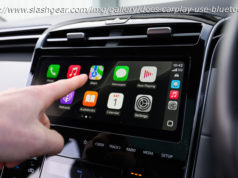If you’re at all familiar with BMW’s M3 Competition, then you know it’s powerful. With each new generation comes a new threshold for horsepower.
German cars are known for a lot of things. They’re somehow no-frills, straight-to-business vehicles that are still very over-engineered. They flash a closed-lip smile and give a curt nod to their passengers as they comfortably cruise the autobahn, likely wearing a color somewhere between black and white. They’re also very fast, and each of the big three German automakers — Audi, Mercedes-Benz, and BMW — have a special trim level dedicated to performance. Audi has its RS line, which stands for « RennSport » in German (and « racing sport » in English). Mercedes has AMG, which stands for the German mouthful, « Aufrecht Mechler and Großaspach », (the names and birthplace of AMG’s founders), and BMW has M.
But what is M? According to BMW, M is « the most powerful letter » and simply stands for motorsport. Created in 1972, the M division was meant to expand the brand’s offerings to include more performance-oriented cars, with its first creation being the BMW M1. Over time, the division grew, and its catalogue expanded along with its capabilities. Cars like the M5 and M Roadster put BMW on the map as a real power player on track days and in professional motorsports alike, but there is perhaps no M car more famous or recognizable than the M3. Since its inception, the M3 has been the poster child for the M division, and it’s a staple in this lineage of horsepower and lap times. Here’s every BMW M3 generation ranked by horsepower.BMW M3 E30
From the beginning, the BMW E30 M3 was a child of motorsport. The first iteration from 1986 only came to be because of the German Touring Car Championship’s (or DTM’s) homologation rules. Some racing series like DTM require that a company create a road-going version of the track car with which it wishes to race. This version is then referred to as the track car’s homologation model. In this instance, the DTM’s rules required BMW to create 5,000 homologation models, but the M3 was so popular, customers wanted more. This high demand resulted in a production run of 16,949 M3s, and it was a true race car for the road.
The only body panels this derivative shared with the regular 3 Series were the doors and roof. It made use of all the era’s newest technologies, making it a state-of-the art, road-ready weapon that anyone could buy — if they had the money, of course. It used ventilated brake discs to maintain consistent stopping power under hard use, as well as a manual transmission to give the driver control over the engine, which was a 2.3-liter, naturally aspirated four-cylinder that produced 195 horsepower. It boasted the boxy style of ’80s sports cars, which remains a hit even now. Its looks and performance are part of why it’s so expensive today, but its history is what makes it truly special.BMW M3 E36
In 1992, six years after the E30’s introduction, BMW released the E36. This new M3 kept its eyes on the performance prize but added some everyday sensibility to the madness of the previous generation. The most obvious change was that the E36 was available as a sedan, allowing the driver and four passengers to race down any highway like it was the autobahn.






